The Magic Tree
“Do you know about our Magic Tree?” four-year-old Rowan asks Alex. She pauses dramatically before passing on the secret of the beloved old tree that has long been a source of delight and inquiry for the children in our early learning program.
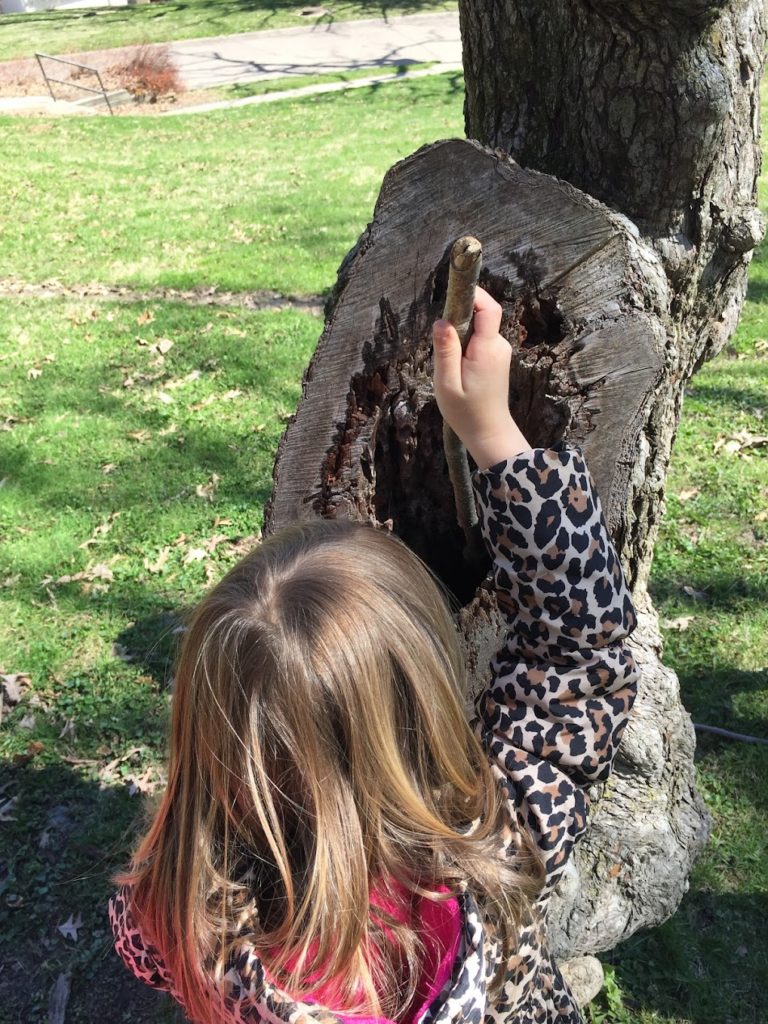
“Watch, Alex!” she instructs. “I will push this stick into the tree, way up here, and say ‘Hocus Pocus.’ Then I can pull the stick out of the tree way down here at the bottom!”
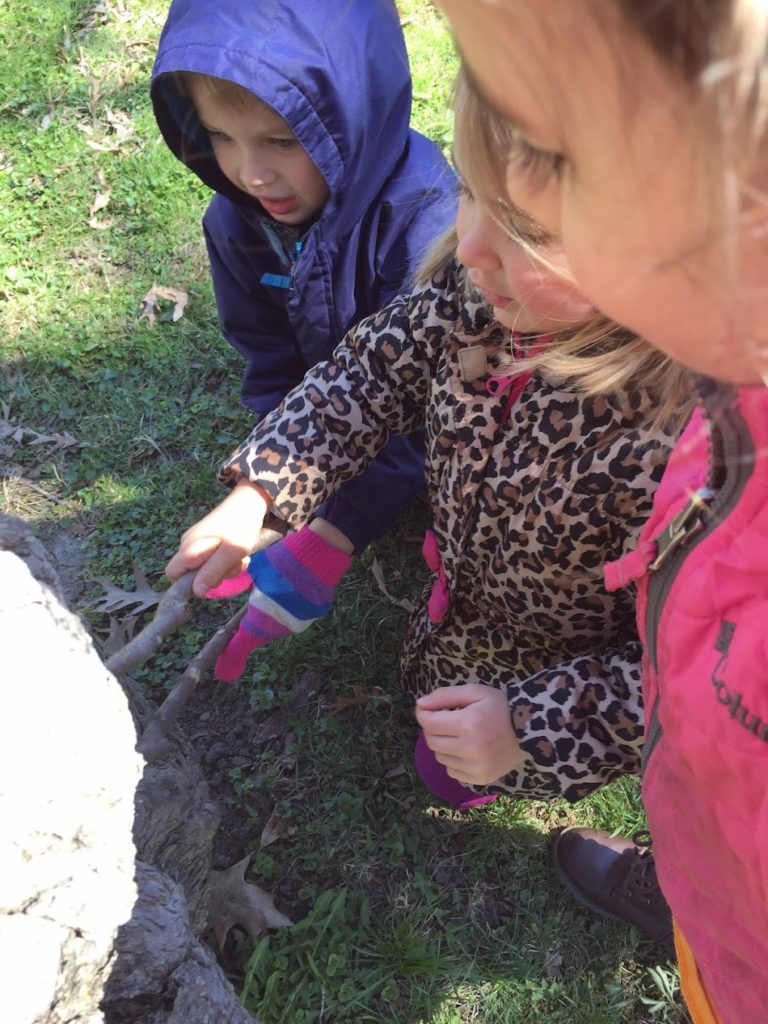
Alex is the perfect audience for Rowan’s magic trick. I watch as the rest of the gang joins in the fun to demonstrate the tree’s “magical” abilities, much to Alex’s amazement.
“See? I put the stick in this circle hole. It’s a hollow tree! There isn’t any tree inside, it’s just a hole!” explains Rowan. “And then you can pull it out down here at the bottom of the tree!”
“The tree is hollow?” Alex repeats in wonder, moving closer to the tree to peer into the hole.
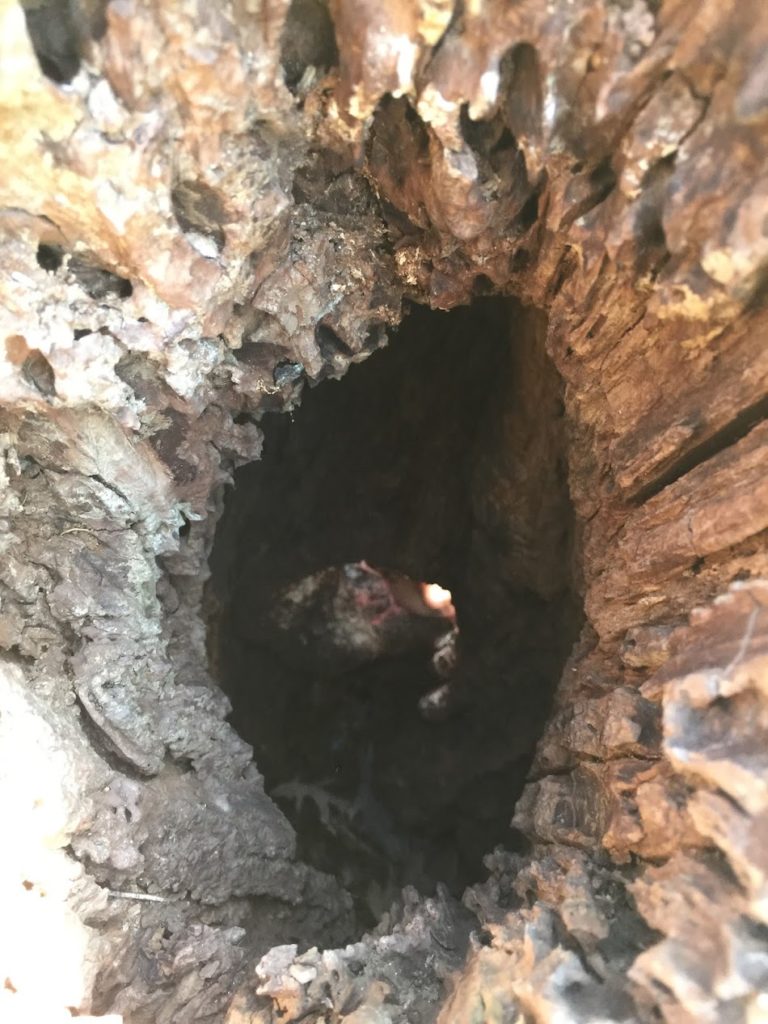
“Yep, it is!” exclaims Owen, who has just joined the gaggle of STEM explorers gathered around the tree. “So you can just push your stick in and say the magic words and pull it out down here!”
Our Magic Tree has evoked wonder and curiosity in the entire gang, sparking a STEM investigation that helps lay the foundation for later math, science and engineering learning. Nature has provided the ultimate learning tool and transformed a moment of outdoor play into an exploration of the concepts of spatial relationships and geometry.
As the children explore the Magic Tree, each moment of learning comes naturally and at each child’s developmental level. When the older children share the secrets of the tree with younger learners, relationship building and trust building add to the magic of the moment.
An understanding of spatial relationships helps children talk about where things are located. Physical, hands-on play like this helps build a child’s mathematical vocabulary in a natural way that is easily understood. When a child can push a stick through a cylinder shape, the concept behind the word through is easier to grasp.
So we allow the children to investigate by pushing sticks down the circle hole, through the hollow part of the tree and out again through the bottom of the trunk. This exploration of spatial relationships—which leads to an understanding of where objects are in relationship to something else—is an essential building block for later math learning.
Children need to learn the language of math to think through and solve their math challenges and then communicate their thought processes to others.
When children play and experiment with sticks and hollow trees with their friends, they learn how to problem-solve and put their thoughts into words. This strengthens their understanding of early math concepts as they use math vocabulary words repeatedly throughout their play.
Geometric shapes are a kindergarten common core standard. When children actually play with (and within) these shapes as they explore the inside of the hollow tree, the learning becomes deeper, more intentional and more relevant.
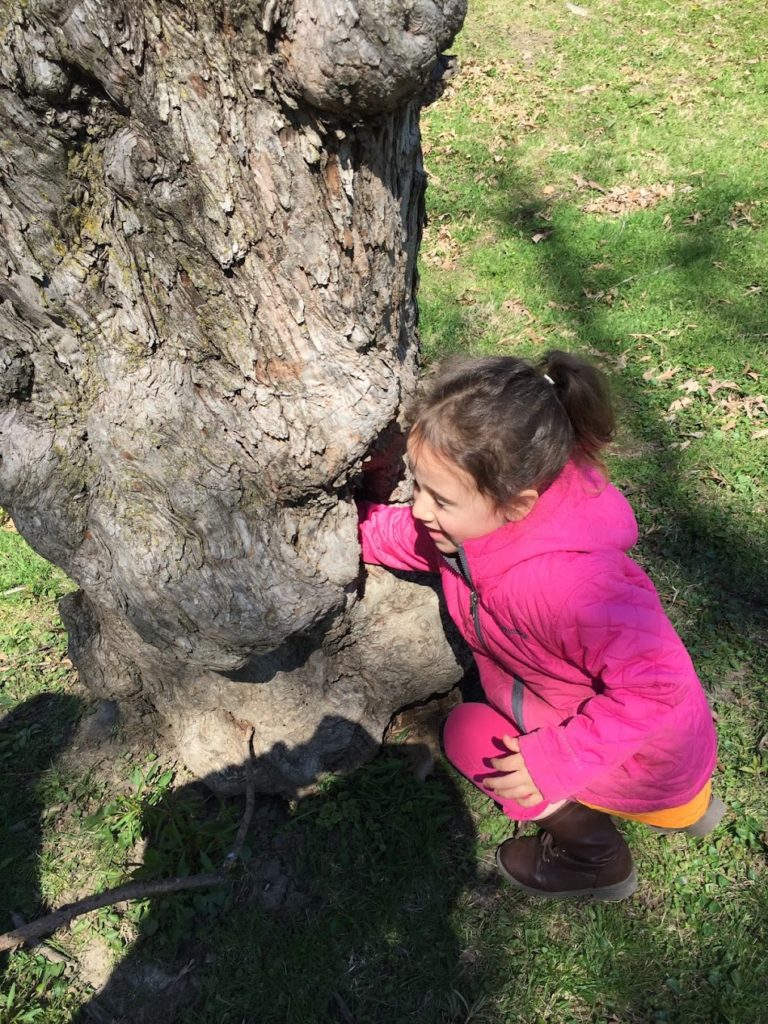
“I think it’s stuck!” yells one child.
“Wait! How many sticks are in there?” asks another.
We begin to get a better sense of measurement as we visually estimate the length of a stick that will fit into the hollow tree and come out the other side.
Opportunities like these are rich in learning, creativity and teamwork as we share theories and develop hypotheses about stick sizes and shapes, as well as angles of insertion, that will result in the “magical reappearance” of the stick at the bottom of the tree.
Problem-solving play helps children develop foundational skills that will be used in math learning in the years to come. Our gang of STEM explorers is busy making predictions, gathering data, studying cause and effect and organizing their information to try something new. We are knocking out those Illinois Early Learning Standards by the minute!

“Can we make the stick go UP the tree?” wonders Linnea.
“I’ll try!” Rowan chimes in.
Hands-on learning also enables children to take their understanding to a deeper level, so that they can analyze the information that they have collected and then apply this knowledge when they create their own experiences.
The children’s enthusiasm for experimenting with the Magic Tree is contagious. When we let children learn through play, movement and trial and error, we lay the groundwork for the kind of deep learning that builds new neural connections. These are the moments that inspire our early learners to investigate the possibilities.
When we introduce children to the vocabulary of math, we are building a foundation for future math success. This early math website has a fabulous glossary of math vocabulary words.
Introduce these vocabulary words into moments of investigative play and you’ll not only see but “hear” the connections being formed in the brains of your budding mathematicians.
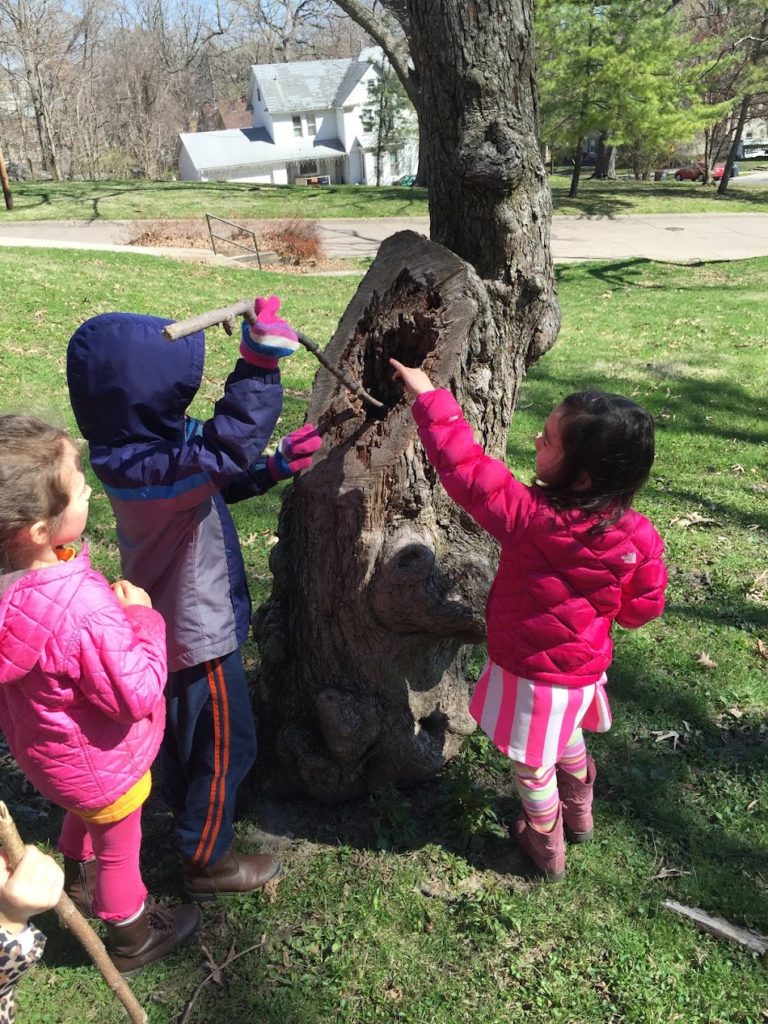
If you don’t have a magic tree nearby, a large box can create the same kind of magic. Cut two holes at different heights on opposite sides of the box and bring in yardsticks or other long objects. This can also be done on a smaller, individual scale with oatmeal boxes and rulers or pipe cleaners.
The possibilities are endless, so let the STEM magic begin!
Looking for more ways to explore math concepts such as measurement and length? Check out our Links and Length lesson plan and parent letter here >
Great story!
I loved the fact of involving nature to talk about measurement and spacial relationships. It looks like so much fun too!
great story and great information were shared in this story
great story great information shared
great information and it was a great story
GREAT STORY AND GREAT INFORMATION SHARED
Great Outdoor Adventure – that promotes & encourages Reasoning, Teamwork & Problem Solving. Also, included is an example of creating your own magic tree if one found in nature is not available.
D. Brennan
Love using things in the environment for lessons. It adds equity as all children are exposed to the outdoors in some way.
wonderful story and information that is shared
Great story to share!
What a terrific way to connect children’s interests with mathematical concepts. I bet these children will always remember that magic tree and the domains learned will stick with them just as well!